A Dream Come True
Louis CHEN, National University of Singapore
The setting up of the Institute for Mathematical Sciences (IMS) at the National University of Singapore (NUS) is a dream come true for the mathematical community in Singapore. The idea of setting up a mathematical institute in Singapore dates back to the 1980's following the enormous successes of two mathematical institutes established in the United States with funding from the National Science Foundation. These were the Mathematical Sciences Research Institute (MSRI) at Berkeley and the Institute for Mathematics and Its Applications (IMA) at the University of Minnesota at Minneapolis.
The main functions of these institutes were to promote and support mathematical research through organizing year-long programs and bringing together mathematicians who share common interests from all over the world to interact and do research with one another. Unlike other institutes, these new institutes did not hire in-house researchers. Instead, interested researchers would submit proposals to these institutes and they would organize programs under some specific themes at these institutes if their proposals were accepted. These programs would then be funded by the host institutes. Mathematicians, some by invitation, would visit the institutes for various lengths to participate in the programs.
Inspired by the successes of these institutes, a group of mathematicians led by Peng Tsu Ann, who was then Head of the Department of Mathematics at NUS, started talking about setting up a similar institute in Singapore. This topic was to become a constant conversation piece during lunches and coffee breaks in the following years. It was thought that such an institute would bring huge benefits to the mathematical community in Singapore and could also become a foremost mathematical institute in this region, if not in Asia.
These thoughts finally crystallized into a proposal for the establishment of a mathematical institute, which we wrote and submitted to the University for funding in 1991. It was revised and, with the support of the University, we submitted it to the National Science and Technology Board (predecessor of A*STAR) for funding in 1996. Both attempts were unsuccessful. In 1998, with strong support from NUS, we rewrote the proposal and submitted it to the Ministry of Education (MOE) for funding. This time, our proposal was approved and we received generous start-up funding from MOE and NUS for the first five years. In addition, the University granted the new institute the use of two colonial houses in Prince George's Park.
In retrospect, the time was right for us to have a mathematical institute. There were three reasons. First, by 1998 the mathematical community in Singapore had grown substantially both in size and strength. Second, NUS was in the process of transforming itself from a teaching university to a research university and then to a world-class university. Third, Singapore was in a transition to a knowledge-based economy and was moving towards a first world status. Mathematics has permeated into almost every scientific discipline. Both fundamental research in mathematics as well as its applications to the various scientific disciplines cannot be separated from national development.
The Institute for Mathematical Sciences (IMS) was formally established in July 2000 as a University-level institute. I was fortunate to be appointed as the director. As the founding director, I was immediately faced with two challenges. First, the physical infrastructure needed to be in place quickly. Second, good quality programs had to be planned and solicited with only a year of lead time and in an unfavorable geographical position of being far away from the major academic institutions in Europe and the US.
The Scientific Advisory Board was appointed to provide advice and guidance on the scientific development of IMS and to assist the director in evaluating and selecting proposals for the Institute's programs. The Board was chaired by Roger Howe of Yale University. The other members were Jacques-Louis Lions (1928–2001) (Collège de France), Keith Moffatt (University of Cambridge), Hans Föllmer (Humboldt University of Berlin), Avner Friedman (Ohio State University), Lui Pao Chuen (Ministry of Defence) and David Siegmund (Stanford University). They all agreed to serve on the Board without hesitation. It was clear that they all took a personal interest in this new endeavor and were determined to ensure that the Institute would be a successful one. It is sad to mention that Lions passed away shortly before the Institute was formally inaugurated.
The Management Board was also formed with Chong Chi Tat as the Chair to oversee the running of the Institute. Other members came from the Office of Research, Faculty of Science, Faculty of Engineering, Nanyang Technological University, Defence Science & Technology Agency and industry.

Founding Scientific Advisory Board, December 2003: (from left) Sun Yeneng, Louis Chen, Chong Chi Tat, Hans Föllmer, Lui Pao Chuen, Avner Friedman, Keith Moffatt, David Siegmund, and Roger Howe.
n the first year of its inception, the Institute was housed in the Department of Mathematics while the two colonial houses were being renovated. I recall that my first deputy director, Chen Kan, was helping me with the planning of the IT infrastructure of the Institute and the hiring of support staff. I was working very closely with the architect from PWD Consultants on the concept and details of the renovation. For example, we had to explore where to make an extension for a seminar room, which walls to knock down, how many toilets to keep, what colors to use for the walls and what tiles to use for the floors and the toilet walls.
Three six-month programs were planned and the themes decided after consultation with the Scientific Advisory Board. The first three programs were Coding Theory and Data Integrity (July–December 2001), Post-Genome Knowledge Discovery (January–June 2002) and Representation Theory of Lie Groups (July 2002–January 2003).
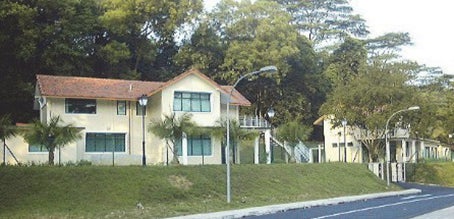
IMS buildings, 2001: two renovated colonial houses in Prince George's Park.
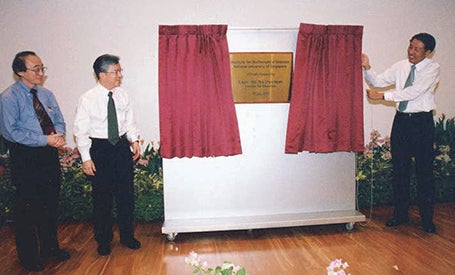
Official Opening, 17 July 2001: (from left) Louis Chen, NUS President Shih Choon Fong, Minister for Education Teo Chee Hean.
We moved to the renovated houses in June 2001. The Institute was officially opened on 17 July 2001 by the guest of honor, Rear Admiral Teo Chee Hean, then Minister for Education. In his speech, the Chair of the Scientific Advisory Board, Roger Howe, charted the paths for IMS's development. He argued that the establishment of IMS was an inevitable undertaking because Singapore was "a full participant in the information revolution" and "mathematics is deeply and broadly engaged with information technology". But due to the small size of the Singapore scientific community, IMS would have to engage in the whole spectrum of mathematical activity, ranging from research on "subjects chosen for their lively internal agendas" to strengthening "the ties between mathematical research and other sectors in Singapore". Thus, the establishment of IMS was also an audacious undertaking. He ended his speech with a word of encouragement, saying that he had high hopes for IMS's success.
The first program started in mid-July 2001, followed by the other two programs in 2002. The Fields Medalist, Jean-Pierre Serre of Collège de France, was invited to the first program. He delivered the inaugural lecture on "Codes, curves and Weil numbers". Serre first visited Singapore in February 1985 and has made several return visits, most recently in 2009. As the number of visitors increased, the seminar room became too small for seminars and workshops, and with the support of the President and Provost of NUS, an auditorium with a seating capacity of 80 was built in 2003.
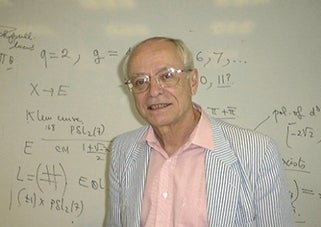
Jean-Pierre Serre, Inaugural Lecture, Coding Theory and Data Integrity (Jul–Dec 2001).
From the beginning, it was decided that the programs at the Institute should cover all of the mathematical sciences and their applications. This direction has proved to be quite fruitful, particularly for a small country like Singapore. But as time moved on, it became clear that six-month programs were difficult to sustain, due to the small size of the scientific community in Singapore. Gradually, we reduced the program duration to two months and we reached the steady state of holding programs lasting from one to three months.
Through the years, many local and overseas researchers submitted proposals to organize programs. By December 2012, IMS had supported 47 programs, 47 standalone workshops, conferences and symposia, 16 summer/winter/spring (seasonal) schools, 43 public lectures and many colloquium lectures. Many fields were covered. Broadly classified, these were the various branches of pure mathematics, scientific computing, imaging science and digital media, biological and medical sciences, mathematical physics, fluid dynamics, turbulence, hydrology and climate change, probability and statistics, and economics and finance. These activities highlighted local developments, such as a breakthrough in the study of braids, and brought new results from overseas to local scientists.
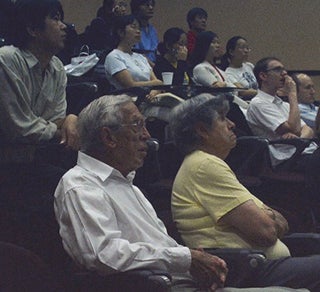
Charles and Margaret Stein, Stein's Method and Applications: A program in honor of Charles Stein (28 Jul–31 Aug 2003).
Many programs and workshops were co-organized or co-funded by other research institutes, faculties and departments in NUS and also by other universities, national research institutes, government ministries and industrial and commercial bodies in Singapore. A few were co-organized and co-funded by foreign mathematical institutes such as the Pacific Institute for the Mathematical Sciences (PIMS) at Vancouver and the Research Institute for Mathematical Sciences (RIMS) at Kyoto University. Programs such as the following are related to Singapore's strategic interests: Financial Mathematics (2 November–23 December 2009); Mathematical Imaging and Digital Media (5 May–27 June 2008); Data-driven and Physically-based Models for Characterization of Processes in Hydrology, Hydraulics, Oceanography and Climate Change (6–28 January 2008); Mathematical Modeling of Infectious Diseases: Dynamics and Control (15 August–9 October 2005); Post-Genome Knowledge Discovery (January–June 2002).

Eric Maskin, Uncertainty and Information in Economics (9 May–3 Jul 2005).
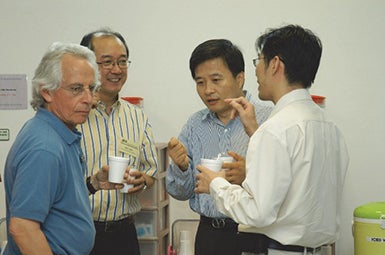
Facing camera: (from left) Stanley Osher, Tony Chan, Shen Zuowei, Mathematical Imaging and Digital Media (5 May–27 Jun 2008).
The programs and workshops were attended by many mathematicians and scientists as well as graduate students from Singapore and overseas. Among the participants and visitors to IMS were Nobel Laureates and Fields Medalists. The IMS activities have provided much stimulus to research in various fields. Applications of mathematics to other disciplines are better understood. Many research collaborations were also forged, which in many cases have led to discovery of significant results, such as in representation theory, logic, multiscale modelling, wavelets and frames, mathematical economics, and probability.
In 2009, the John Templeton Foundation endowed a gift of about S$1.4 million (approximately US$1 million) to establish the program Asian Initiative for Infinity (AII) at IMS. The AII was initiated and conceived by Theodore Slaman and Hugh Woodin of the University of California at Berkeley and Chong Chi Tat. It was a three-year program with a special focus on innovative research on "Infinity" and creating a community of researchers on Infinity in Asia. This initiative came at a time when the subject Infinity was on the brink of major breakthroughs and there was an increasing interest in the subject in Asia. Both Slaman and Woodin were among the organizers of the two-month program Computational Prospects of Infinity in 2005 and had been conducting annual summer schools in logic at IMS since 2006. During the three-year period of the AII program, more workshops were organized and the scope of the summer schools enlarged with more invited speakers and graduate students from other parts of Asia supported. The annual summer school in logic continues till today even after the AII program ended.
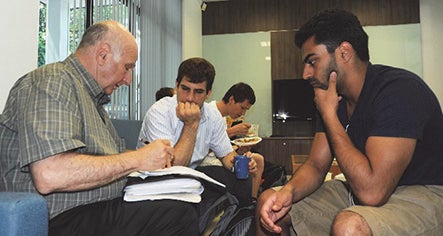
Menachem Magidor (far left), Asian Initiative for Infinity (AII) Graduate Summer School (28 Jun–23 Jul 2010).
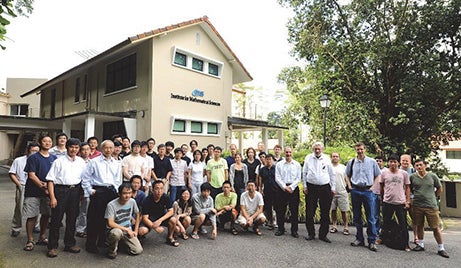
Asian Initiative for Infinity (AII) Graduate Summer School (20 Jun–17 Jul 2012).
The gift of S$1.4 million was matched dollar-for-dollar by MOE. While the Templeton Foundation fund was used for the activities under the AII program, the matching fund from MOE went into an endowment fund for IMS. This was the first time IMS has set up an endowment fund.
In addition to the lectures conducted at the seasonal schools, many of the programs at IMS contain tutorial lectures for graduate students and those who are interested in learning the subject. In order to make the notes for the tutorial lectures and seasonal schools available to a wider audience, IMS publishes a lecture notes series. This series also occasionally includes special lectures and workshop proceedings organized wholly or jointly by the Institute. Each volume is edited by the program or school organizer(s) and the series is published and distributed by World Scientific. So far, 32 volumes of the lecture notes series have been published. To give an idea of the wide spectrum of fields covered in the series, here is a sample of the volumes published. Vol 32: Mathemusical Conversations; Vol 27: E-Recursion, Forcing and C*-Algebras; Vol 22: Multiscale Modeling and Analysis for Materials Simulation; Vol 21: Environmental Hazards; Vol 19: Braids; Vol 16: Mathematical Understanding of Infectious Disease Dynamics; Vol 12: Harmonic Analysis, Group Representations, Automorphic Forms and Invariant Theory; Vol 10: Gabor and Wavelet Frames; Vol 7: Markov Chain Monte Carlo; Vol 4: An Introduction to Stein's Method.
As part of its outreach program, the Institute organizes public lectures given by prominent mathematicians. It also publishes a widely circulated newsletter called Imprints which contains news of the Institute's activities, invited articles of special interest and interviews with some eminent visitors to the Institute. Two issues of Imprints are published every year with World Scientific as the printer. Our colleague Leong Yu Kiang served as the founding editor of Imprints and has been consistently the sole interviewer of those mathematicians and scientists. Yu Kiang and I jointly conceptualized the newsletter.
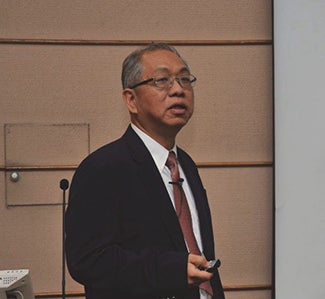
Yau Shing-Tung, public lecture, Jan 2011.
On 24 June 2010, IMS celebrated its tenth anniversary with the NUS President, Tan Chorh Chuan, as the guest of honor. To commemorate the occasion, a volume entitled Creative Minds, Charmed Lives featuring interviews of 38 mathematicians and scientists was published. It is a collection of the interviews that had appeared in Imprints up to the time of the publication of the volume. World Scientific is also the publisher of this commemorative volume. During the celebration, our guest of honor, Tan Chorh Chuan, was presented with a copy of the volume.
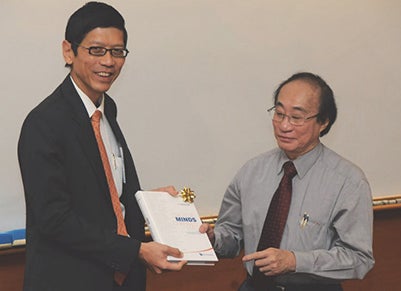
Tenth Anniversary Celebration, 24 June 2010: Louis Chen (right) presenting the book Creative Minds, Charmed Lives to NUS President Tan Chorh Chuan.
Our colleague from the Department of Physics, Bernard Tan, specially composed a piece of music Remembrance for flute and harp. The title of the piece befitted the occasion on which we reflected on the development of the Institute over the past 10 years. The music was performed by two young budding musicians during the celebration. A video highlighting the achievements of the Institute was made with the help of the NUS Centre for Instructional Technology and was also shown during the celebration.
In addition, a commemorative booklet entitled Celebrating 10 Years of Mathematical Synergy was published with the help of World Scientific. Among the features in the booklet are articles by Chong Chi Tat and by Roger Howe, an interview with the director, reminiscences by the deputy directors and thoughts of program organizers and participants.
The afternoon of the day of celebration was devoted to three lectures delivered by Tony Chan, President of Hong Kong University of Science and Technology, Hugh Woodin of University of California at Berkeley and our colleague Sun Yeneng. It was a happy and memorable occasion.
I served as director of the Institute until the end of 2012. Chong Chi Tat succeeded me and has been the director since January 2013. At the same time Ho Teck Hua became the Chair of the Management Board. He was succeeded by Lai Choy Heng in September 2015. The University continues to provide funding for IMS after the five-year start-up period ended.
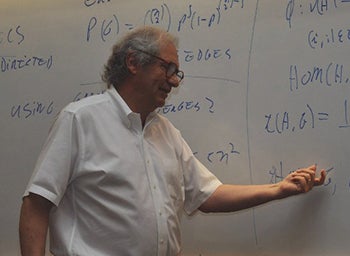
Persi Diaconis, Probability and Discrete Mathematics in Mathematical Biology (14 Mar–10 Jun 2011).
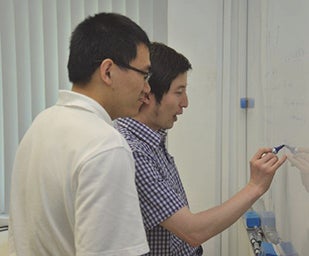
Li Jiyou (right), Coding, Cryptology and Combinatorial Designs (15 May–11 Jun 2011).
The Chair of the current Scientific Advisory Board is Siu Yum-Tong of Harvard University, who succeeded Roger Howe in 2010. The other members of the Board are Alice Chang (Princeton University), Louis Chen (NUS), Wolfgang Hackbusch (Max Planck Institute for Mathematics in the Sciences), Iain Johnstone (Stanford University), Lin Fang-hua (New York University), Jill Pipher (Brown University), Quek Tong Boon (DSO National Laboratories, Singapore) and Hugh Woodin (Harvard University). The following had also served on the Board for various periods of time: David Mumford (Brown University), Olivier Pironneau (Université Paris VI), Fan Jianqing (Princeton University) and Douglas Arnold (University of Minnesota).
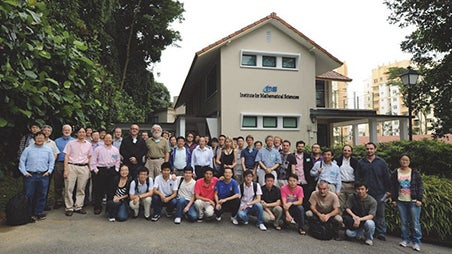
Multiscale Modeling, Simulation, Analysis and Applications (1 Nov 2011–20 Jan 2012).
During my term as director, I was assisted by the following deputy directors: Chen Kan, Sun Yeneng, Denny Leung, Leung Ka Hin, Tan Ser Peow and To Wing Keung, each serving for one to three years. The current deputy director is Choi Kwok Pui.
As we look back, the establishment of IMS and its development is very much the result of collective efforts. The Ministry of Education, the University, Scientific Advisory Board, Management Board, benefactors, my deputy directors, support staff, program organizers, colleagues, and last but not least, the visitors and participants of programs, all played crucial roles in contributing to the growth of the Institute into what it is today.
Since Chi Tat took over the directorship, two new successful schemes have been introduced. The first is the IMS Long-term Visitor scheme for young researchers who visit the Institute for at least a month or the entire program period. The second is the IMS Distinguished Visitor scheme under which prominent senior scientists, who could raise the quality and prestige of a program, are appointed as Distinguished Visitors for visits of at least two weeks. Among the Distinguished Visitors appointed was the Fields Medalist, Vladimir Voevodsky, of the Institute for Advanced Study, USA, who participated in the program Combinatorial and Toric Homotopy (1–31 August 2015).
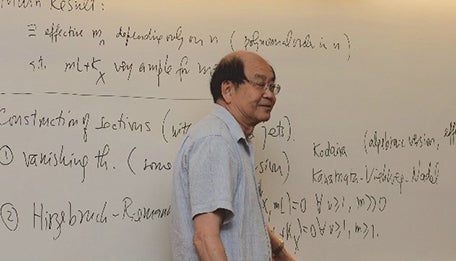
Siu Yum-Tong, Complex Geometry (22 Jul–9 Aug 2013).
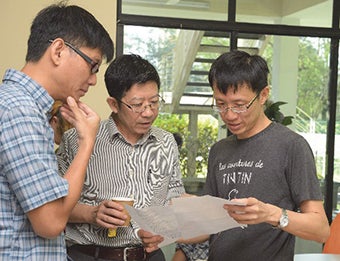
From left: Loke Hung Yean, Zhu Chengbo and Gan Wee Teck, New Developments in Representation Theory (6–31 Mar 2016).
The Institute has also signed agreements with the Korean National Institute for Mathematical Sciences and the Vietnam Institute for Advanced Study in Mathematics for the cooperation on scientific exchanges and development of areas of the mathematical sciences of mutual interest.
The IMS public lecture series is now called the Ng Kong Beng Public Lecture Series, named after the late father of Ng Kok Lip and Ng Kok Koon, who jointly made a generous donation of S$250,000 to the Institute's endowment fund. The Institute has received a dollar-for-dollar matching grant from MOE. The interests from the total endowed sum are used to provide funding support for the public lectures and the seasonal schools.
In addition, the Institute organizes jointly with the Department of Mathematics the Oppenheim Lectures, a distinguished lecture series named after Sir Alexander Oppenheim, who was the first Head of the Department of Mathematics and later became the Vice Chancellor of the University of Malaya (predecessor of the University of Singapore, which in turn is a predecessor of NUS). The lecture series, which began in 2015, is held annually. Each year, an eminent mathematician is invited to give lectures at IMS and the Department of Mathematics. The Fields Medalist, Ngo Bao Chau, of the University of Chicago gave the inaugural Oppenheim Lecture in 2015.

Ngo Bao Chau, Inaugural Oppenheim Lecture, Jan 2015.
The Institute has also expanded the scope of its programs. It now hosts more than 700 mathematical scientists every year from Singapore and from other countries worldwide. The activities of the Institute have helped create a research vibrancy at a level unseen before in Singapore. The Institute for Mathematical Sciences has become an important part of the research landscape at NUS. It brings top mathematicians and well-known researchers from other disciplines to NUS and connects local mathematicians to the international scientific community. The visibility and reputation it has acquired and developed over the years is a competitive advantage for the Department and NUS as a whole.
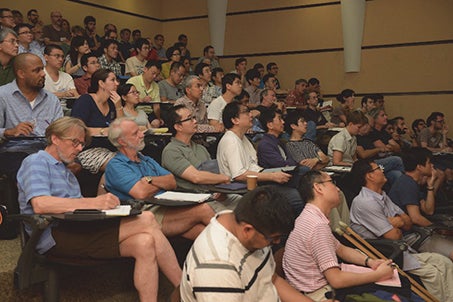
Geometry, Topology and Dynamics of Moduli Spaces (1–19 Aug 2016).
The Institute has made its mark within a short span of 16 years. What will it be like in the next 16 years? Of course, the quality and intellectual level of the programs will continue to improve. More top mathematicians and scientists will come to participate in its activities. But the ultimate aim is to become one of the foremost mathematical institutes in the world.
Acknowledgements
The author is indebted to Chong Chi Tat and Leong Yu Kiang for their very helpful comments, corrections and suggestions. Thanks also go to Emily Chan, Stephen Auyong and Jolyn Wong of IMS for their help in finding suitable photographs from the Institute's photo archive for this article. The author would like to thank IMS for its kind permission to reproduce the photographs in this article.
Reference
1 Institute for Mathematical Sciences.
2 Chong Chi Tat, "Fifty Years of Mathematics in Singapore: A Personal Perspective" in 50 Years of Science in Singapore, World Scientific, 2016.
*In this article, all Chinese names are written with surnames first.
Adapted with permission from 50 Years of Science in Singapore
(editors: BTG Tan, Hock Lim and KK Phua) (pages 269-284).
Published by World Scientific Publishing.
Copyright © 2016 by World Scientific Publishing.
